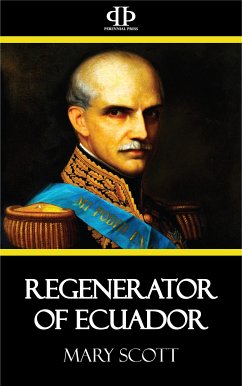In course of time followed the abolition of the Missions, the expulsion of the Jesuits and other religious orders, and the people, gradually reduced to a state of desperation, revolted against Spain who lost, one by one, all her South American colonies, till Bolivar finally drove the Spaniards from the country in 1817. But though successful in this, the tyranny of revolution succeeded to Spanish rule and, unable to stem the torrent, Bolivar died of a broken heart in 1830. The total dismemberment of the colony followed, each state set up for itself as an independent Republic, of which one was Ecuador. This State is twice the size of France, and is bounded by Colombia to the north, Peru to the south, Brazil and Peru to the east, and the Pacific Ocean to the west. It comprises three departments subdivided into ten provinces with a population of about 1,000,000, including many still savage Indian tribes who inhabit the forests east of the Andes.
Nature has richly endowed this land, which, however, until Moreno's day, was practically inaccessible to the ordinary traveler. The formation of the country is similar to that of Peru; a strip of sea-coast lies to the west, and towards the east an immense slope broken by mountain ranges, while in the center two great chains of the Andes enclose a lofty plateau. From it flow many rivers, several of them uniting with the Guayas estuary on the west, and the Napo on the east. Among the chief mountains in Ecuador is the famous Chimborazo, about 20,000 feet high, "sealed by a dome of snow and ice"; the volcano Pichincha, whose burping- crater was pronounced by Humboldt to offer the finest spectacle he had ever seen, and Cotopaxi, another volcano somewhat resembling the Japanese mountain Fujiyama.
The capital town of Ecuador, Quito, stands in the central plain, over 9,000 feet above the sea, and is built on the site of an ancient Inca city said to have possessed half a million of inhabitants. Here the climate by day is a perpetual spring although the nights are cold, but on the coast the temperature and vegetation are tropical. This rich tract of country is thickly covered with palms, groves of coconuts, and gardens of pineapples, said to be unrivalled in flavor; and even the wild jungle is rendered beautiful by the flaming scarlet of the passion-flower creepers...
Nature has richly endowed this land, which, however, until Moreno's day, was practically inaccessible to the ordinary traveler. The formation of the country is similar to that of Peru; a strip of sea-coast lies to the west, and towards the east an immense slope broken by mountain ranges, while in the center two great chains of the Andes enclose a lofty plateau. From it flow many rivers, several of them uniting with the Guayas estuary on the west, and the Napo on the east. Among the chief mountains in Ecuador is the famous Chimborazo, about 20,000 feet high, "sealed by a dome of snow and ice"; the volcano Pichincha, whose burping- crater was pronounced by Humboldt to offer the finest spectacle he had ever seen, and Cotopaxi, another volcano somewhat resembling the Japanese mountain Fujiyama.
The capital town of Ecuador, Quito, stands in the central plain, over 9,000 feet above the sea, and is built on the site of an ancient Inca city said to have possessed half a million of inhabitants. Here the climate by day is a perpetual spring although the nights are cold, but on the coast the temperature and vegetation are tropical. This rich tract of country is thickly covered with palms, groves of coconuts, and gardens of pineapples, said to be unrivalled in flavor; and even the wild jungle is rendered beautiful by the flaming scarlet of the passion-flower creepers...









